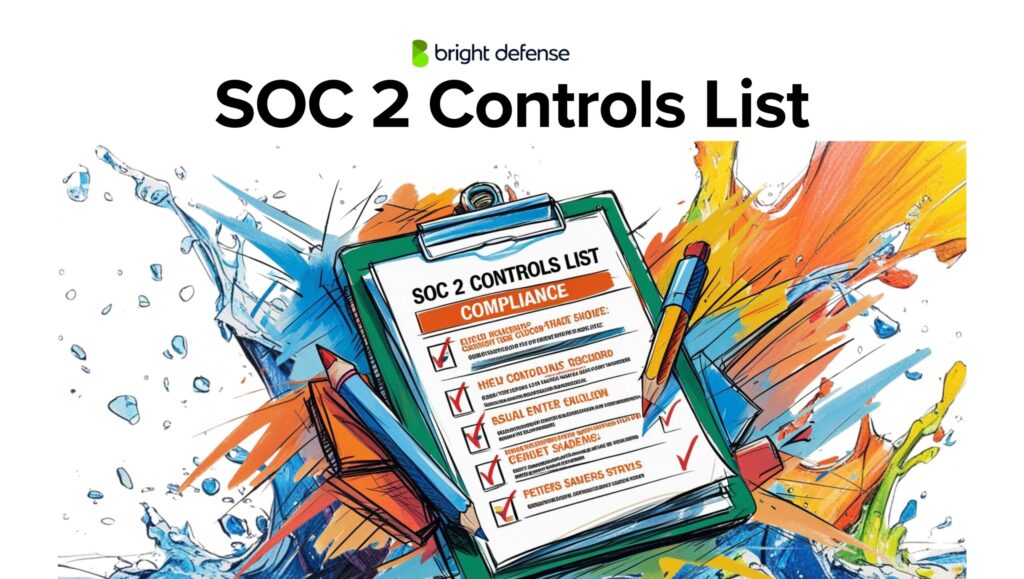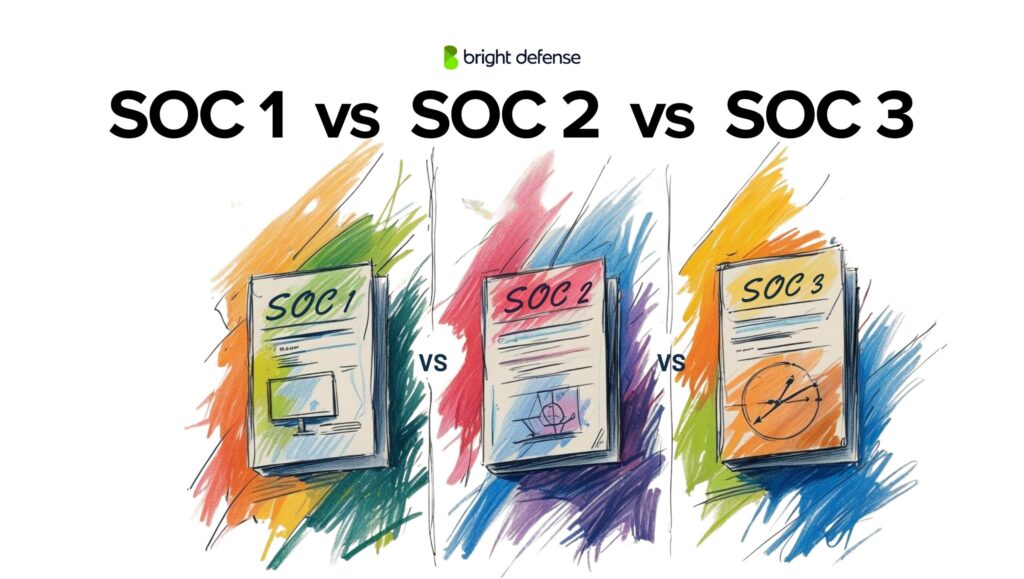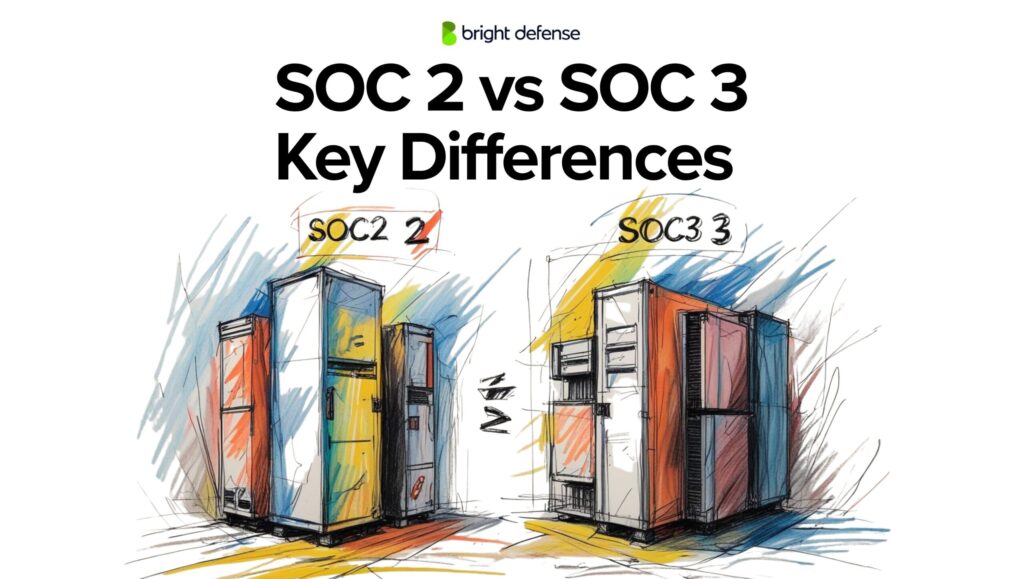
John Minnix - Compliance Strategist
June 1, 2025
Compliance Gap Analysis for SMBs
Small to medium-sized businesses (SMBs) are increasingly subject to the same cybersecurity threats and regulatory requirements as larger corporations. In fact, 43% of cybersecurity attacks are aimed at SMBs. Compliance frameworks like SOC 2, ISO 27001, HIPAA, and CMMC are essential for securing sensitive information, maintaining customer trust, and avoiding legal penalties. A thorough compliance gap analysis can illuminate the path to achieving these standards, ensuring that SMBs are protected against cyber threats and positioned for growth in an increasingly competitive marketplace.
This article explains the compliance gap analysis process and why it is essential for your business. If your organization needs help with a gap analysis or remediating compliance gaps, Bright Defense can help. Let’s get started!
Conducting a Proper Compliance Gap Analysis
We start by looking closely at how your business can align with cybersecurity and regulatory standards through a detailed compliance gap analysis. This critical step helps pinpoint where your business stands compared to the required standards like SOC 2, ISO 27001, HIPAA, and CMMC. We’ll review your current processes, policies, and systems to find gaps between what you’re doing and what you should be doing.
From there, we’ll create a plan to fix those gaps. This ensures your business meets its current compliance obligations and is ready for any new ones that might come up. This approach keeps your business safe from potential threats. It also builds customer trust by showing you’re serious about compliance.
Let’s review the steps.
Step 1: Defining the Scope
- Identify Regulatory Requirements: Begin by thoroughly understanding the compliance frameworks relevant to your business. SOC 2, ISO 27001, HIPAA, and CMMC are common frameworks you may want to consider. Next, determine which aspects of your business operations, products, and services are governed by these standards.
- Assess Business Operations: Map your business processes, data flows, and IT infrastructure. Understanding how information moves through your organization will highlight areas that fall under compliance scrutiny.
Step 2: Identifying the Current State of Compliance
- Documentation Review: Examine existing policies, procedures, and controls to see how they align with compliance requirements. This includes reviewing security policies, incident response plans, and employee training programs.
- Technical Assessment: Use automated tools to scan your network and systems for vulnerabilities. Assess security controls like access controls, encryption, and data protection measures against the standards set by the frameworks.
- Employee Interviews and Observations: Engage with staff to understand their awareness and adherence to security policies and procedures. Observing daily operations can reveal discrepancies between documented policies and actual practices.
Step 3: Analyzing the Findings
- Gap Identification: Compile the data collected from documentation reviews, technical assessments, and employee interactions to pinpoint where your security posture deviates from compliance requirements.
- Risk Assessment: Evaluate the identified gaps to understand the risk each poses to your business. Consider the likelihood of a security incident and its potential impact on operations and reputation.
- Prioritization: Not all gaps are created equal. Based on the risk assessment, prioritize remediation efforts. Focus first on areas that pose the greatest threat to compliance and security.
Step 4: Developing a Remediation Plan
- Actionable Steps: For each identified gap, develop a clear, actionable step for remediation. This could involve revising policies, implementing new technologies, or conducting employee training.
- Timeline and Resources: Assign a realistic timeline and the necessary resources for each remediation step. Ensure that the plan is achievable with the available budget and manpower.
- Stakeholder Engagement: Communicate the remediation plan to all stakeholders, including management, IT staff, and relevant employees. Their buy-in is critical for successful implementation.
Step 5: Implementing the Plan
- Execution: Begin executing the remediation steps according to the plan. Ensure that changes are made systematically and with minimal disruption to business operations.
- Monitoring and Adjustment: Continuously monitor the implementation process to ensure compliance efforts are on track. Be prepared to adjust the plan based on challenges or changes in business operations.
- Documentation: Keep detailed records of all changes made during the remediation process. This documentation will be invaluable for future compliance audits and assessments.
Following these detailed steps, SMBs can conduct a thorough compliance gap analysis that identifies current shortcomings. This paves the way for a stronger, more compliant future. This rigorous approach ensures businesses meet regulatory requirements. It also builds a culture of security that helps defend from cyber threats.

The Benefits of Continuous Compliance
This part of our discussion highlights the wide-ranging benefits of continuous compliance. We will demonstrate the vital role of managing risks effectively, strengthening bonds with customers, and enhancing the efficiency of business operations. By focusing on continuous compliance and conducting regular compliance gap analyses, SMBs can better protect themselves against constantly evolving threats.
Moreover, it turns the concept of compliance into a competitive edge, allowing these businesses to stand out in their market. We’ll explore how embracing continuous compliance helps SMBs grow in a secure and regulated manner, ensuring they stay ahead in compliance and security.
Proactive Risk Management
- Early Detection: Continuous compliance means regularly monitoring and assessing your systems and processes against compliance standards. This ongoing vigilance helps in the early detection of potential compliance gaps and security vulnerabilities, reducing the likelihood of breaches or non-compliance penalties.
- Dynamic Response to Threats: In today’s rapidly evolving cyber threat landscape, quickly adapting and responding to new threats is crucial. Continuous compliance facilitates a dynamic security posture that can evolve as new threats emerge. This ensures that protective measures are always up to date.
Building Trust with Customers
- Demonstrating Commitment: Continuous compliance is a clear signal to customers and partners of your firm’s commitment to maintaining high standards of security and privacy. This commitment is critical for building and maintaining trust, particularly in industries where sensitive data is handled.
- Competitive Advantage: In a crowded market, data protection and regulatory compliance assurance can be a significant differentiator. SMBs prioritizing continuous compliance can leverage this as part of their value proposition, attracting clients who value security and reliability.
Streamlining Compliance Efforts
- Integration into Business Processes: SMBs can integrate compliance activities into their daily operations by making compliance continuous. This reduces the disruption and resource drain typically associated with periodic compliance efforts. This integration makes compliance more manageable and lessens the burden on staff.
- Efficiency Gains and Cost Reduction: Continuous compliance helps identify inefficiencies and redundancies in compliance and security processes. Streamlining these processes reduces operational costs and frees up resources that can be invested in other business areas.
- Leveraging Technology: Automating compliance tasks where possible and using compliance management tools can significantly increase efficiency. These technologies can monitor compliance status in real-time, alert teams to potential issues, and even automate compliance and reporting tasks.
Facilitating Growth and Scaling
- Scalability of Compliance Programs: As SMBs grow, their compliance needs will evolve. A continuous compliance approach is inherently scalable, allowing for adjustments as the business expands into new markets, faces new regulatory requirements, or undergoes organizational changes.
- Foundation for Strategic Decisions: Continuous compliance provides valuable insights into the business’s operational and risk management aspects. This information can be leveraged to make informed strategic decisions, guiding the company toward sustainable growth and success.

The Challenge of Compliance Gap Analysis for SMBs
Small to medium-sized businesses often face significant hurdles in managing regulatory compliance. This is due to the lack of internal expertise, typically found in larger companies that may have a Chief Compliance Officer and dedicated security staff. This gap in expertise can lead to challenges in thoroughly identifying and addressing compliance requirements, exposing SMBs to risks like legal penalties and reputational damage.
The complexities of compliance, compounded by ever-changing regulations, require continuous effort and expertise that SMBs may not have in-house. Partnering with a compliance consultancy like Bright Defense offers a strategic advantage. Bright Defense specializes in guiding SMBs through the maze of compliance with frameworks like SOC 2, ISO 27001, HIPAA, and CMMC, offering services from gap analysis to ongoing compliance management.
By leveraging Bright Defense’s expertise, SMBs can ensure they meet their compliance obligations effectively and focus on their core business, knowing their compliance posture is robust and managed by specialists. This partnership not only helps SMBs overcome the challenge of compliance but also positions them for secure growth and success in their respective markets.
Conclusion
Continuous compliance offers a robust framework for managing risk, protecting customer data, and building a trustworthy brand. For SMBs, integrating continuous compliance into their operations is not just about avoiding penalties. It’s about positioning themselves for success in an increasingly digital and regulated world. By embracing continuous compliance, SMBs can enjoy enhanced security, improved operational efficiency, and a competitive market edge. Bright Defense stands ready to guide SMBs through this journey, ensuring compliance becomes a cornerstone of their business strategy, not just a checkbox on a list.
Compliance Gap Analysis from Bright Defense!
If your business needs a compliance gap analysis, Bright Defense can help. Our CISSP and CISA-certified experts will conduct a compliance review, identify gaps, deliver a gap analysis report, and develop a plan to achieve compliance. In addition to conducting compliance gap analysis, we offer risk assessments, policy generation and implementation, and business continuity analysis.
Going further, our continuous compliance service delivers a security program to meet compliance frameworks, including SOC 2, CMMC, HIPAA, and ISO 27001. We combine our expertise with compliance automation to help you achieve compliance more efficiently.
If you are ready to overcome your compliance challenges, contact Bright Defense. We look forward to partnering with you!

FAQ: Mastering Compliance Gap Analysis for SMBs
What is a compliance gap analysis?
A compliance gap analysis is a thorough evaluation process used by businesses to identify where their current practices don’t meet the required compliance standards. It involves evaluating your company’s policies, procedures, and controls against established regulatory compliance requirements. This analysis helps pinpoint specific areas that need improvement to ensure full compliance.
How does a regulatory compliance gap analysis differ from a standard gap analysis?
A regulatory compliance gap analysis specifically focuses on comparing a business’s current practices against the requirements set forth by relevant regulatory bodies. It’s tailored to ensure that all legal and regulatory standards are met, whereas a standard gap analysis might cover broader business goals and performance metrics, not just compliance.
Why is a compliance program important for SMBs?
A compliance program is crucial for SMBs because it helps manage and mitigate the risks associated with non-compliance, such as legal penalties, financial losses, and damage to reputation. A well-structured compliance program ensures that a business consistently meets its compliance requirements, thereby protecting it from potential risks and enhancing its credibility and trustworthiness.
What steps are involved in conducting a compliance gap analysis?
Conducting a compliance gap analysis involves several key steps: defining the scope of analysis, identifying compliance requirements, conducting risk assessments, identifying compliance gaps, analyzing risk severity, and developing a remediation plan to address identified gaps.
How do risk assessments fit into the compliance gap analysis process?
Risk assessments are a critical component of the compliance gap analysis process. They help businesses understand the potential risks associated with identified compliance gaps, including the likelihood of occurrence and the impact on the business. This information is vital for prioritizing remediation efforts based on risk severity.
What are internal controls and how do they relate to compliance?
Internal controls are policies, procedures, and technologies that businesses implement to ensure the integrity of financial reporting, compliance with laws and regulations, and effective and efficient operations. In the context of compliance, internal controls are mechanisms put in place to prevent and detect compliance gaps and to mitigate potential risks.
How often should SMBs conduct internal audits for compliance?
SMBs should conduct internal audits regularly to ensure ongoing adherence to compliance processes and requirements. The frequency of these audits can vary based on the size of the business, the nature of its operations, and the complexity of its compliance requirements. However, conducting these audits at least annually is a good practice for most businesses.
How can SMBs effectively identify compliance gaps?
SMBs can effectively identify compliance gaps by conducting comprehensive reviews of their current policies, procedures, and practices against the compliance requirements of relevant regulatory frameworks. This includes evaluating internal controls, performing risk assessments, and seeking feedback from employees about the effectiveness of current compliance measures.
What strategies can SMBs use to mitigate potential risks identified during the gap assessment?
To mitigate potential risks identified during the gap assessment, SMBs should prioritize gaps based on risk severity and develop a detailed action plan for each. This might involve revising policies, enhancing internal controls, conducting targeted employee training, and implementing new technologies designed to strengthen compliance processes.
Why is continuous monitoring important in the compliance process?
Continuous monitoring is important in the compliance process because it allows SMBs to quickly identify and address any new compliance gaps or changes in regulatory requirements. This proactive approach helps ensure that the business remains in compliance over time and can adapt to new challenges as they arise, effectively mitigating potential risks before they become significant issues.
Get In Touch



